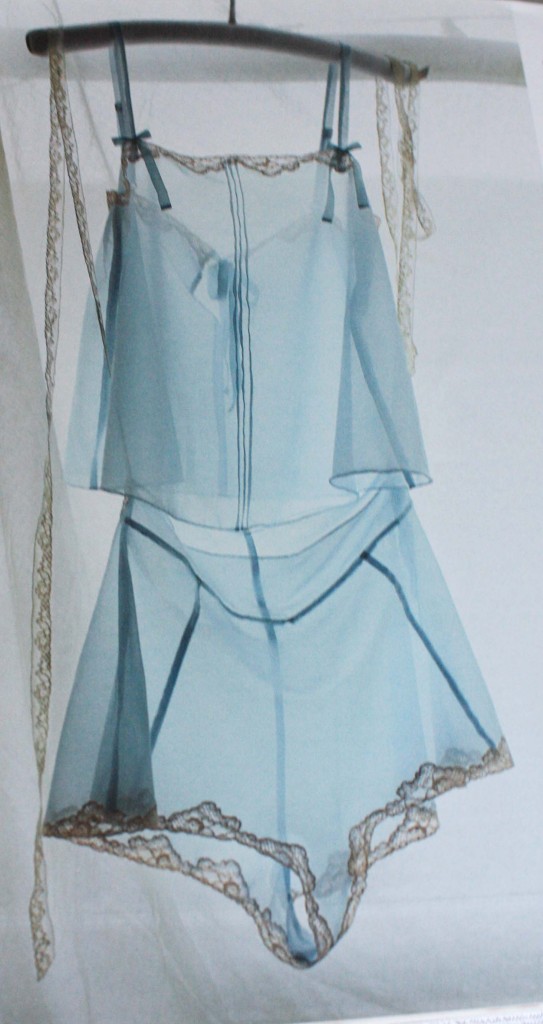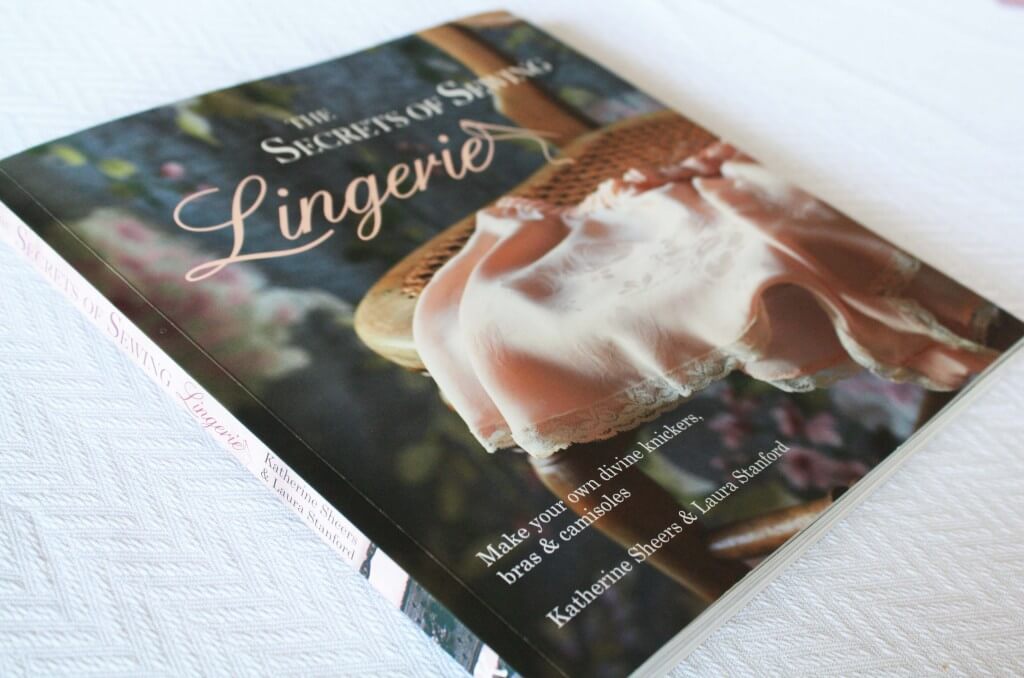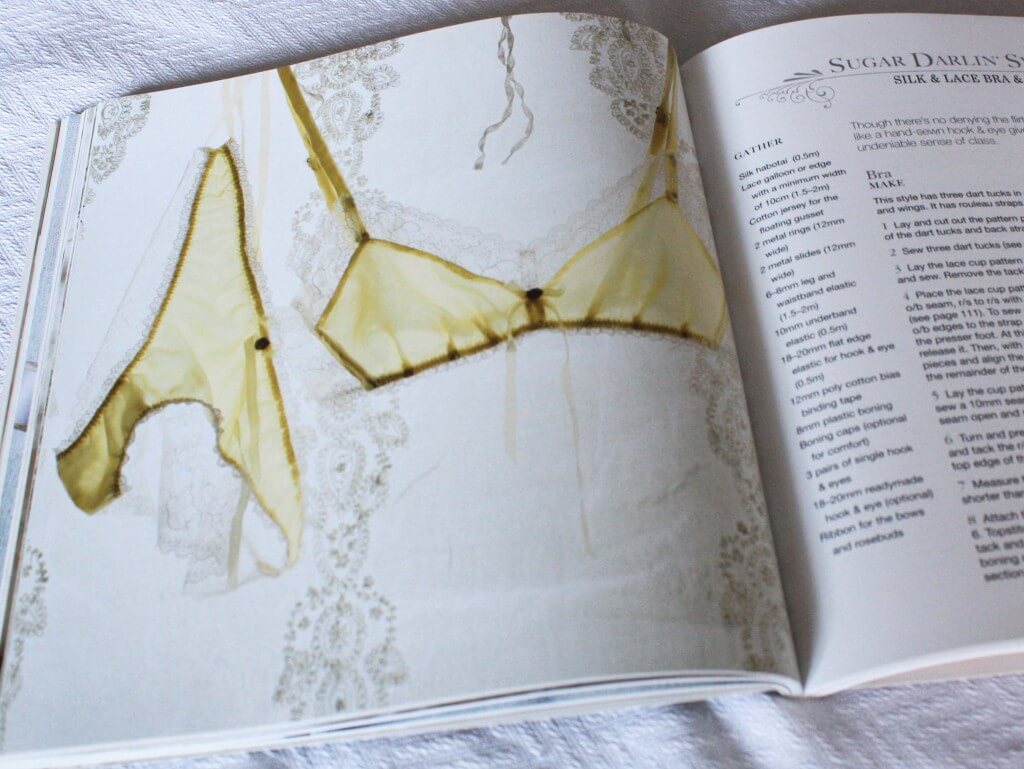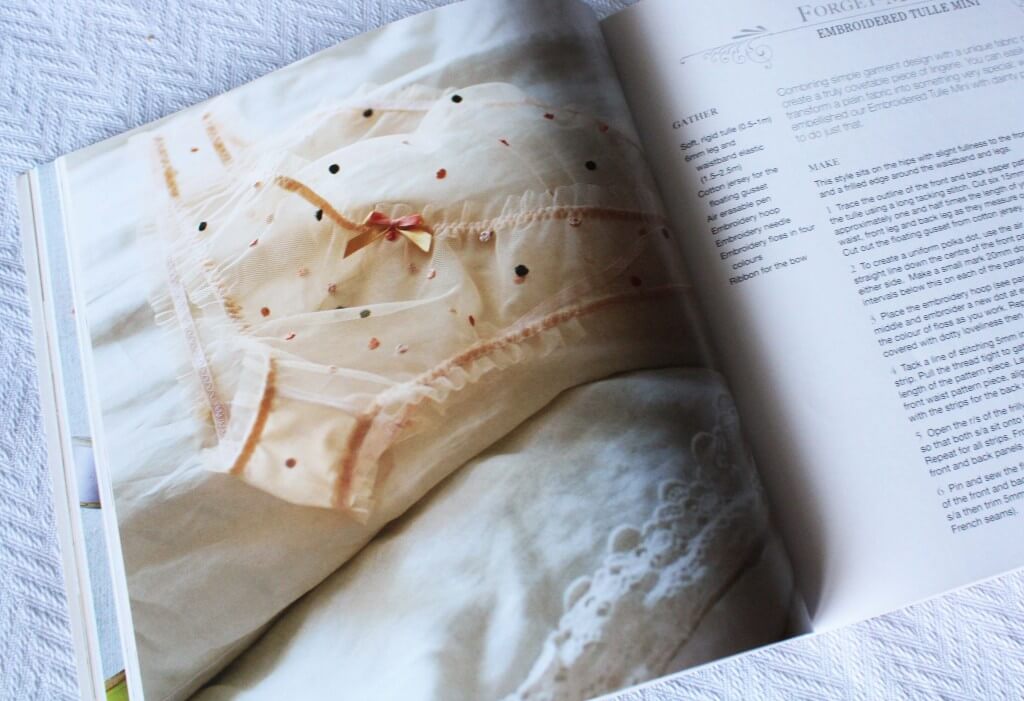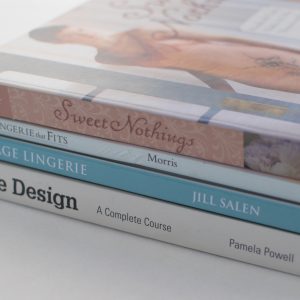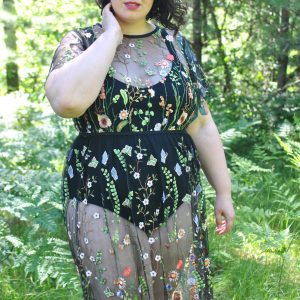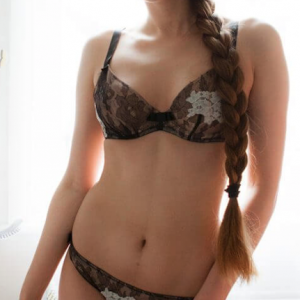Book Review: The Secrets of Sewing Lingerie by Katherine Sheers and Laura Stanford
As lovers of lingerie, we often buy too many bras and knickers. For some addicts, this also extends to lingerie books. Perhaps you want to learn about the history of lingerie or learn how to make your own lingerie. Maybe you like lingerie books with beautiful images as inspiration (coffee table book anyone?). Recently, I went on a book buying spree and bought too many lovely books. There was one new book I had not heard of before which I took a chance on (no reviews, so I purchased on cover and description alone!) This book surprised me as it appears to be small, but it is beautifully presented and filled with information.
The Secrets of Sewing Lingerie is a lingerie sewing book, released in October this year. In the preface, the authors explain how they felt the idea of making your own lingerie was shrouded in mystery, and expressed a need to dispel these myths by revealing insider knowledge. The authors of the book are Katherine Sheers and Laura Stanford. Katherine studied Textile Design at Chelsea College of Art and Contour Fashion at De Montfort University. She's worked for lingerie suppliers in London, NYC, Sri Lanka, and China. Laura studied Contour Fashion at De Montfort University and has designed lingerie for UK high street retailers Marks & Spencer, Debenhams, and luxury brand Agent Provocateur. The authors show a strong admiration for lingerie, self-described as "life-long collectors of fabrics, lace and all things lingerie."
The Secrets of Sewing Lingerie is a modern interpretation of vintage lingerie home sewing books. The layout is easy to follow, being similar to other sewing books by starting out with equipment you need to make lingerie. This is followed by information on measuring, fabric, cutting, sewing, and a guide on how to read and understand the patterns. The authors introduce ideas on colours for lingerie, how to dye your own fabric and trims, and the importance of hand washing your lingerie. The book has a wonderful tone and the instructions are to the point. The photos used throughout have been styled with accessories, soft furnishings, or hanging in soft light to best display their beauty. Just to note, the photographs of the sewing projects are not showing front and back. They are shot in a creative way rather than a flat garment.
The book has 25 projects including: knickers, soft cup bras, a roll-on girdle, garters, camisoles, and even some gifting options like an eye mask. Just to note, the book does not cover underwire bras. The sizing guide offers sizes 8 to 18 and on the patterns cup sizing goes up to a 34D. The patterns are included in a pouch at the back of the book. You will need to copy the patterns onto another piece of paper to cut out your design. There is information on fitting alterations, but this is not extensive. I believe fitting alterations would only be minor with the soft lingerie pieces featured in the book.
The lingerie styles are reminiscent of the 1920s and 1930s, with modern styling and sizing. Prior to the popular use of elastane in lingerie fabrics were rigid, which means they have no elastane. The authors explain that lingerie with elastication in the fabric is designed to stretch out to fit your shape. Whereas rigid fabrics use elastic to pull the garment in to fit the true contours of your shape. Fabrics used in the book include silk, cotton, jacquard, and lace. However, there is one stretch fabric project, a camisole and knicker sleep set, which uses stretch jersey. The authors advise if you are a beginner in sewing lingerie, it is easier to start with rigid fabrics. The projects start with a simple cotton knicker, which is recommended before starting any of the other projects.
Throughout the sewing projects, there are references to the chapter 'Sew On and Sew Forth, which is near the back of the book. This chapter details key hand-sewing stitches required to sew lingerie. It also explains how to make straps, an enclosed waistband, how to sew a petal gusset, how to make your own handmade hook and eye, and many other key methods required to sew lingerie. I believe it is important to read 'Sew On and Sew Forth' before starting. I would also suggest reading the page on abbreviations which are noted in the instructions. Abbreviations are normal within the garment industry, but may be a new idea for a novice sewer. For example, 'CF' stands for centre front and 'Z/Z' stands for zigzag stitch.
I enjoyed this book and felt the lingerie designs are modern, with a sense of nostaliga to what our grandmothers or great grandmothers would have sewn at home. This book would make a lovely gift idea for the holidays or as a gift for yourself. The authors make sewing lingerie less daunting for the beginner sewer and an interesting read for the advanced sewer. I hope to see a second book in the future!
Do you enjoy making your own special handmade lingerie? If so, what do you enjoy to make?





